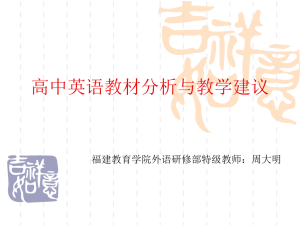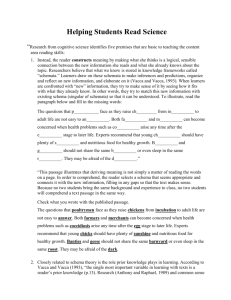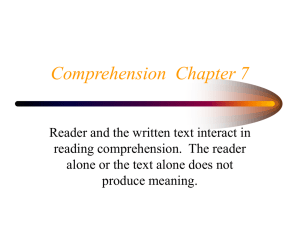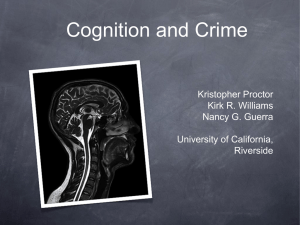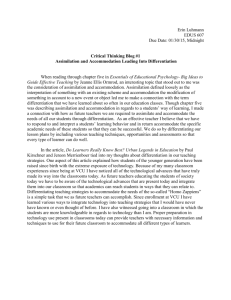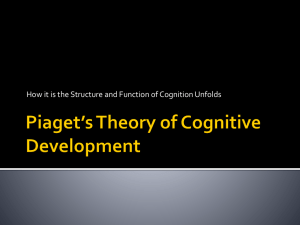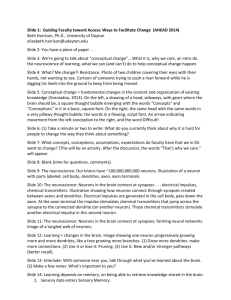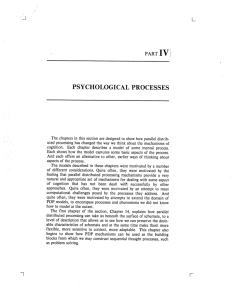Text from Piaget PowerPoint seen in class
advertisement
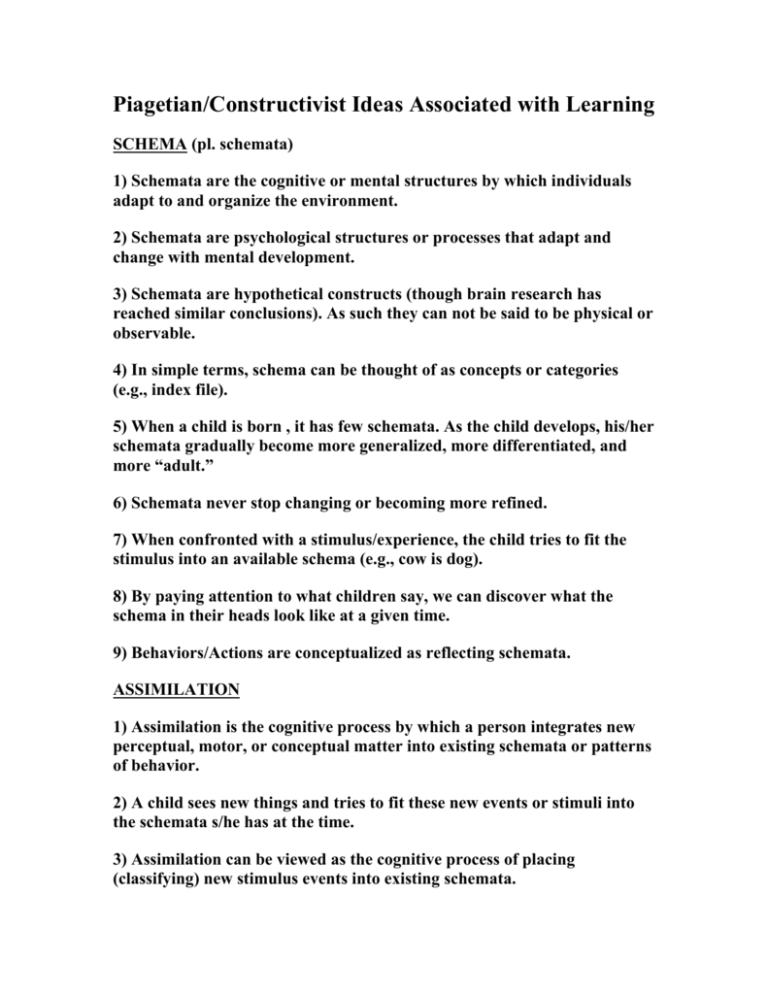
Piagetian/Constructivist Ideas Associated with Learning SCHEMA (pl. schemata) 1) Schemata are the cognitive or mental structures by which individuals adapt to and organize the environment. 2) Schemata are psychological structures or processes that adapt and change with mental development. 3) Schemata are hypothetical constructs (though brain research has reached similar conclusions). As such they can not be said to be physical or observable. 4) In simple terms, schema can be thought of as concepts or categories (e.g., index file). 5) When a child is born , it has few schemata. As the child develops, his/her schemata gradually become more generalized, more differentiated, and more “adult.” 6) Schemata never stop changing or becoming more refined. 7) When confronted with a stimulus/experience, the child tries to fit the stimulus into an available schema (e.g., cow is dog). 8) By paying attention to what children say, we can discover what the schema in their heads look like at a given time. 9) Behaviors/Actions are conceptualized as reflecting schemata. ASSIMILATION 1) Assimilation is the cognitive process by which a person integrates new perceptual, motor, or conceptual matter into existing schemata or patterns of behavior. 2) A child sees new things and tries to fit these new events or stimuli into the schemata s/he has at the time. 3) Assimilation can be viewed as the cognitive process of placing (classifying) new stimulus events into existing schemata. 4) Assimilation theoretically does not result in a change of schemata, but it does affect the growth of the schemata and is thus a part of development. ACCOMMODATION 1) When confronted with a new stimulus, a child tries to assimilate it into existing schemata. Sometimes this is not possible because there is no schemata into which it readily fits. What does a child do? 2) A child can create new schema in which to place the stimulus or 3) A child can modify an existing schema so that the stimulus fits into it. Both are forms of accommodation. 4) Thus, accommodation is the creation of new schemata or the modification of old schemata. Both actions result in a change, or development of, cognitive structures (schemata). 5) Once accommodation has taken place, a child can try again to assimilate the stimulus. Because the structure has changed, the stimulus is readily assimilated. Assimilation is always the end product. Some Consequences of Schema, Assimilation and Accommodation 1) The child who is actively assimilating and accommodating is in no way required or expected to evolve schemata that assume a particular form. 2) Schemata are internally constructed with experience over time. 3) Schemata reflect the child's current level of understanding and knowledge of the world. 4) The schemata have been constructed by the child. Because they are constructions, schemata are not accurate copies of reality. 5) A schemata's form is determined by the individual's unique pattern of assimilation and accommodation of experience, and over time schemata more closely approach reality in appearance. 6) No behavior is all assimilation or all accommodation. For example, what we generally think of as child's play is typically more assimilation than accommodation. On the other hand, children's efforts at imitation of others are usually act of accommodation more than assimilation. 7) Accommodation accounts for development (a qualitative change) and assimilation accounts for growth (a quantitative change); together these processes account for learning. EQUILIBRATION 1) Imagine if a person always assimilated stimuli and never accommodated. Such a person would end up with a few very large schemata and would be unable to detect differences in things. 2) Imagine if a person always accommodated stimuli and never assimilated. Such a person would have a great number of very small schemata and would be unable to detect similarities in things. 3) A balance is necessary between assimilation and accommodation. This balanced is referred to as equilibrium. 4) Equilibrium is the self-regulatory mechanism that ensures the developing child's efficient interaction with the environment. 5) Disequilibrium is a state of imbalance between assimilation and accommodation. 6) Disequilibrium can be thought of as a state of cognitive conflict resulting when expectations are not confirmed by experience. A child expect something to be a certain way and it is not. 7) Equilibration is the process of moving from disequilibrium to equilibrium. 8) When disequilibrium occurs, it motivates the child to seek equilibrium. Motivation can be thought of as that which activates behavior. In Piagetian terms, the major source of motivation is disequilibrium. 9) The schemata the child uses may not be in harmony with those of adults, but the child's placement of stimuli into schemata is theoretically always appropriate for his/her level of conceptual development. There is no wrong placement. There are just better and better placements as development proceeds. Stages of Cognitive Development I. Sensorimotor Intelligence (0-2 years). 1) Behavior is primarily sensory and motor. 2) The child does not yet internally represent events and “think” conceptually, although “cognitive” development is seen as schemata are constructed (e.g., sucking reflex). II. Preoperational Thought (2-7 years). 1) The development of language and other forms of representation and rapid conceptual development. 2) Reasoning is dominated by perception and is thus prelogical or semilogical. III. Concrete Operations (7-11 years). 1) The child develops the ability to apply logical thought to concrete problems in the present. IV. Formal Operations (11-15 years or older). 1) The child becomes capable of applying logical thought to all classes of problems.

